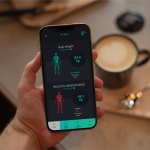
GLP-1 receptor agonists (GLP-1 RAs), such as semaglutide and tirzepatide, are transforming the landscape of weight loss and type 2 diabetes treatment. However, alongside fat reduction, these medications have been shown to contribute to a significant loss of lean body mass, including skeletal muscle. This loss can undermine metabolic health, physical function, and long-term wellness outcomes.
For individuals and providers focused on sustainable, healthy weight management, the preservation of muscle mass must become a core priority—supported by diet, exercise, and regular body composition analysis.
The Impact of GLP-1 Therapy on Muscle Mass
GLP-1 RAs work by mimicking the incretin hormone GLP-1, which increases satiety and insulin secretion while reducing gastric emptying. This leads to dramatic weight loss—but studies reveal that up to 15–40% of that loss can come from lean tissue, not just fat.
This is especially concerning for:
- Older adults, who are more prone to sarcopenia (age-related muscle loss)
- People with type 2 diabetes, who rely on muscle mass for insulin sensitivity
- Physically active individuals, whose performance and recovery depend on lean tissue
“The loss of lean mass in patients on GLP-1 therapy is similar to that seen with caloric restriction alone and is of particular concern in the elderly.”
– Mocciaro et al., 2025
Why Preserving Muscle Matters
Skeletal muscle is not just about strength—it plays a central role in metabolic health, immunity, mobility, and long-term resilience. Muscle:
- Helps regulate blood sugar and insulin response
- Prevents frailty, falls, and fractures
- Supports physical activity, independence, and quality of life
- Enhances resting metabolic rate, supporting long-term weight maintenance
Without strategies to protect muscle, GLP-1 users may experience:
- Plateaus or rebounds in weight loss
- Fatigue and decreased physical performance
- Worsened glucose regulation over time
Evidence-Based Strategies for Muscle Preservation
To reduce muscle loss during GLP-1 therapy, patients and providers should adopt the following interventions:
- Prioritize Protein Intake
- Daily intake of 1.2–2.4g of protein per kilogram of body weight supports muscle protein synthesis.
- Spread intake across meals to maximize absorption.
- Consider supplementation when whole food intake is insufficient.
“Protein intake above the RDA is necessary during caloric restriction to prevent muscle loss.”
– Verywell Mind, 2024
- Incorporate Resistance Training
- Resistance training stimulates muscle growth and maintenance.
- A program of 2–4 strength sessions per week, plus light aerobic activity, is optimal.
- Focus on compound movements: squats, deadlifts, presses, and pulls.
“Lean mass preservation was significantly improved with resistance training during GLP-1 therapy.”
– Peralta-Reich et al., 2025
- Monitor Body Composition with BIA
- Tools like the Evolt 360 Body Scanner use Bioelectrical Impedance Analysis (BIA) to track lean mass vs fat mass.
- BIA scans offer visibility into muscle-to-fat ratio, segmental breakdown, and progress over time.
- Objective data supports personalized nutrition and training adjustments.
“Body composition tracking allows for early intervention when muscle loss is detected.”
– Ghanim et al., 2024
- Explore Pharmacological Support
- Novel agents, such as myostatin inhibitors (e.g., enobosarm), are being investigated for muscle preservation.
- One study showed significant lean mass retention in patients combining enobosarm with semaglutide.
“In a Phase 2b trial, enobosarm preserved muscle mass in older adults on GLP-1 therapy.”
– Veru Inc., 2025
Conclusion
GLP-1 medications are powerful tools in the fight against obesity and metabolic disease—but they are not without risks. Muscle loss during treatment is real, measurable, and manageable with the right approach.
Evolt supports healthcare professionals, gyms, and wellness providers with the tools to track, protect, and optimize body composition through:
- Advanced BIA scanning (Evolt 360)
- Real-time data analytics (Evolt Insights)
- Personalized programming and education
When fat loss is the goal, muscle preservation must be the strategy.
Download the Evolt Active App and start tracking your muscle today.
References
- Ghanim, H., Chaudhuri, A., Hejna, J., & Dandona, P. (2024). Preserving lean body mass during weight loss in elderly obese patients with GLP-1 receptor agonist treatment. Journal of the Endocrine Society, 8(Supplement_1), bvae163.019. https://doi.org/10.1210/jendso/bvae163.019
- Mocciaro, G., Capodici, A., & De Amicis, R. (2025). GLP-1 receptor agonists induce loss of lean mass: so does caloric restriction. BMJ Nutrition, Prevention & Health. https://doi.org/10.1136/bmjnph-2025-001206
- Peralta-Reich, D., Filingeri, A., & Ali, M. (2025). Weight loss: Study finds keys to minimize muscle loss from GLP-1 drugs. Medical News Today. https://www.medicalnewstoday.com/articles/study-3-strategies-minimize-muscle-loss-glp-1-weight-loss-drugs
- Verywell Mind. (2024). Taking a GLP-1 for weight loss? These healthy habits will help. https://www.verywellmind.com/healthy-habits-to-practice-on-weight-loss-medication-8722362
- Veru Inc. (2025). Enobosarm preserves lean body mass in older adults treated with semaglutide for weight reduction: Topline Phase 2b data. Patient Care Online. https://www.patientcareonline.com/view/enobosarm-preserves-lean-body-mass-in-older-adults-treated-with-semaglutide-for-weight-reduction-topline-phase-2b-data

